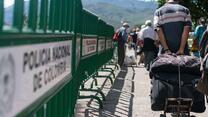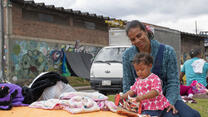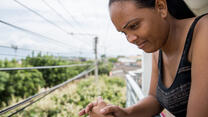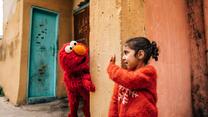THE CRISIS
Since 2015, the humanitarian system in Venezuela has been dire. More than 4.5 million Venezuelans have left the country and the factors driving their displacement show no signs of abating. An estimated 1.7 million Venezuelan currently live in Colombia. About 460,000 of them are school-aged children.
Over recent decades in numerous and meaningful ways, Colombia has become a powerful example of the possibilities of improved human development and strengthened governance despite significant challenges. Colombia continues to struggle with high levels of poverty and an extraordinary number of internally displaced people. Nevertheless, the country’s government and civil society have made tremendous strides in establishing greater stability and social cohesion. Now the country is grappling with an influx of Venezuelans unlike one it has ever experienced before.
Venezuelans have been met with a generous and humane response from the Colombian state, which granted them access to the local education and health care systems. Efforts to integrate Venezuelans into Colombia’s public service infrastructure have been aided by the fact that challenges facing refugees elsewhere, including language and cultural barriers, are less of a challenge because Venezuela and Colombia are both Spanish-speaking societies with similar cultures and customs.
But Colombia’s efforts to open these doors have not meant that every Venezuelan has walked through them. Assessments are rightly looking at understanding the barriers to education and trying to get an estimate of the number of children out of school (OOS). Like in many emergencies, the international community is doing little to understand children’s foundational reading, math and social-emotional skills. Without understanding where these children are in terms of foundational skills, educational programs will not know how to support them, policymakers will not know how to make decisions, donors will not know where to direct funding, and people sounding the alarm on the issue will rely on inadequate data.
THE STUDY
With support from the Tinker Foundation, the International Rescue Committee (IRC) conducted a learning assessment in the city of Cúcuta to better understand these challenges and shine a light on children’s needs. This study sought to answer on a set of key questions:
- What are the literacy, numeracy and social-emotional learning (SEL) skills of Venezuelan children in Cúcuta?
- How do these compare to the skills of their Colombian counterparts?
- How do the literacy, numeracy and SEL skills of Colombians and Venezuelans vary by different sub-groups of children by schooling status, age, sex, disability, and socio-economic status?
This brief will discuss several of the key findings from this assessment to illustrate the extent to which schooling, or lack thereof, is impacting children’s outcomes in Colombia.
THE CONTEXT
Located along the shared Colombian and Venezuelan border, Cúcuta is a medium-sized city of about 710,000 people. An estimated 93,000 Venezuelans live in Cúcuta, a city that struggles with high levels of unemployment.
Cúcuta and its environs have also long struggled with a high number of OOS children. Earlier this year there were an estimated 22,350 Venezuelan children in Cúcuta and 361,433 across Colombia OOS.
They are now joined by the more than 9 million school-aged children who are OOS indefinitely because of school closures prompted by the COVID-19 pandemic.6 This IRC study was the first educational assessment of its kind in the Cúcuta region.



